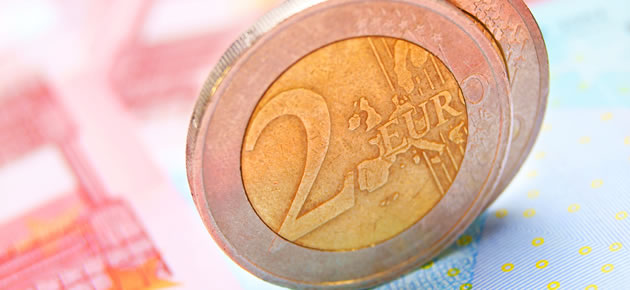Following this morning’s dismal GDP data releases from the Eurozone, the single currency declined sharply against most of its major peers, and dropped to its lowest-level in six-weeks against the US Dollar.
The single currency declined after data showed that Eurozone economy expanded by half of what economists had forecast.
In the first quarter of 2014 the Eurozone expanded by just 0.2%, below the 0.4% expected.
On a year-on-year basis the economy expanded by 0.9%, below expectations for a 1% increase.
GDP reports out Portugal, Italy, Greece, France, Cyprus, Finland and the Netherlands.
The report out of the Netherlands was dismal as the nation’s economy contracted by 1.4%.
The Euro to US Dollar (EUR/USD) exchange rate is trading around 1.3665.
Finland slid back into recession and Italy’s contraction took economists by surprise.
“Today’s figure is a major disappointment, as it suggests that the euro zone is still far away from reaching the escape velocity required for a sustainable recovery,” said Peter Vanden Houte, chief euro zone economist with ING.
Inflation data also released showed that the regions inflation rate remains stubbornly low at 0.7%.
The figure remains well below the ECB’s target of 2%.
The Euro came under renewed pressure as investors raised their bets that the ECB will introduce several monetary easing options at next month’s policy meeting.
“The package the ECB appears to be preparing is welcome but the overall steps are likely to be too small to make a real difference. More aggressive easing than the ECB currently seems to be considering would help from that perspective,” said an economist from ABN AMRO.
The US Dollar meanwhile found support from a report which showed that the number of Americans making claims for unemployment benefits fell to the lowest-level in seven-years last week, adding to signs that the US jobs market is continuing to improve.
According to the Washington based Labour Department, the number of claimants fell by 24,000 to 297,000. The number was well below economist forecasts for a figure of 320,000.
“The labour market continues to improve after some funkiness associated with the holidays. The economy’s generally getting better,” said Brian Jones, senior US economist at Societe Generale.
Further gains for the ‘Greenback’ were held in check after data showed that US industrial production fell unexpectedly in April.
Industrial output fell by 0.6%, economists had forecast the level to remain at the previous months figure of 0.9%.
The US Dollar could push higher against the Euro on Friday if Eurozone balance of trade data disappoints and US housing starts and consumer sentiment data comes in positively.
Euro Exchange Rate News:
[table width=”100%” colwidth=”50|50|50|50|50″ colalign=”left|left|left|left|left”]
Currency, ,Currency,Rate ,
Euro, ,US Dollar,1.3665 ,
,US Dollar,1.3665 ,
Euro, ,British Pound,0.8148 ,
,British Pound,0.8148 ,
Euro, ,Australian Dollar,1.4618 ,
,Australian Dollar,1.4618 ,
Euro, ,Canadian Dollar,1.4855 ,
,Canadian Dollar,1.4855 ,
[/table]



